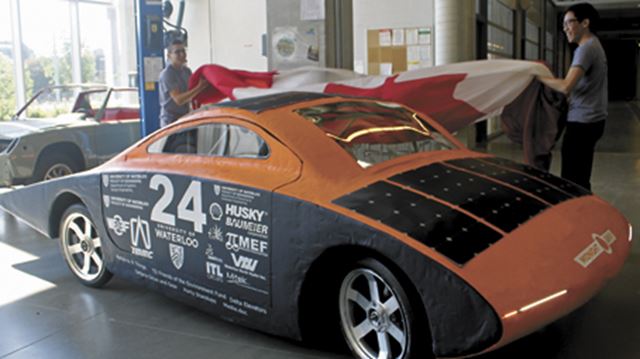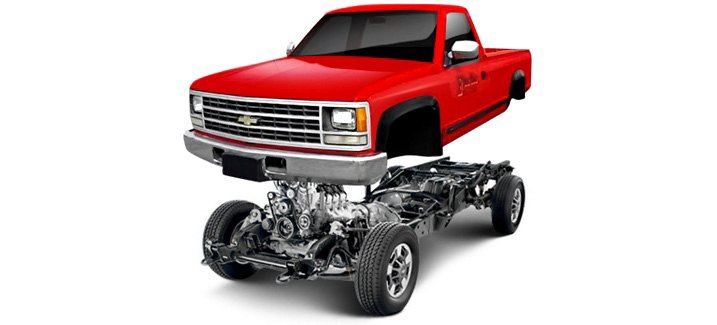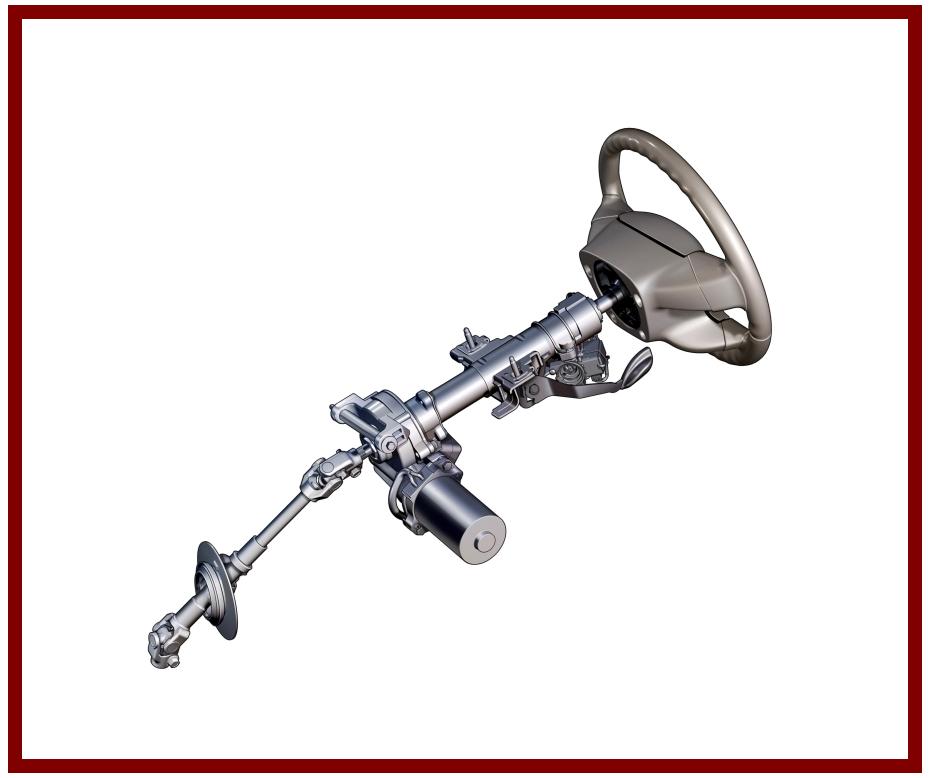...
The Challenger class comprises ultra-lightweight and aerodynamic endurance race cars carrying a single driver, usually in a small cockpit with a canopy. The shape of these cars is designed for maximum efficiency and solar energy collection, usually resulting in a large flat surface to maximize solar array area. This was the original solar car class and remains today the most well-established competition category, containing the majority of solar cars teams around the world. The competition style is a time challenge where the team that reaches the finish line with the least time expired wins.
Midnight Sun has traditionally designed Challenger Class vehicles, but in recent years has shifted to the newer Cruiser class.
...
The Cruiser Class is a fairly new class (started in 2013) that focusses on energy-efficient, practical vehicles designed to carry at least two people. The WSC competition is structured as a "regularity trial" in which teams must reach the finish line within a certain time window but are scored solely on energy consumption and "practicality", which is determined by judges. This is intended to mirror the design goals of consumer passenger vehicles.
As of 20162018, the American Solar Challenge does not hold holds a separate class for Cruiser vehicles but does recognize them and provide , with special rules and scoring for them. It is possible that in the future Cruiser vehicles will have their own competition category in ASCHowever, the scoring system is still under review and is subject to change.
Frame Design: Chassis & Body
...
These terms originate from a time when most vehicles had a separate chassis, in the form of a heavy flat steel frame (onto which the engine and suspension were mounted), and body, in the form of metal panels attached together. This type of design is referred to as a "body-on-frame" and is rarely seen today on anything except trucks.
Modern Automotive Frames
...
Unibody: The frame and body are a single integrated piece. This is the most common design used on modern consumer cars. Steel unibodies form most of the body of the vehicle with an integrated steel structure and may have plastic paneling for aerodynamics.
Space frame: The vehicle has a skeletal frame constructed of steel beams or tubes of varying diameter and wall thickness. Non-structural panels are attached to the frame solely for aerodynamic purposes but otherwise provide no additional strength. This design is used on some high-performance consumer cars and smaller, older aircraft. The strict technical definition for a space frame is requires that the frame is sufficient be sufficiently triangulated such that all forces within the frame are turned into compression or tension, and not flexing.
Monocoque: The body of the car provides all of the strength through distributing loads through its "skin". This is a design typically only seen in aircraft, F1 motorsports, and some high performance motorcycles, where the entire body of the vehicle is formed with a strong shell made of either carbon fibre composites or aluminum panels. Some high performance consumer cars use a monocoque for the passenger cell but extend metal subframes from the front and back for mounting the engine and suspension. Monocoques have the advantage of theoretically achieving the greatest strength-to-weight ratio, but are very hard to design because stretched-skin structures are difficult both to simulate and modify.
Solar Car Frames
...
Midnight Sun's MSX was designed with a steel space frame, whereas MSXI was designed using a carbon fibre monocoque.
Manufacturing
Creating composite panels for the body shell of a solar car requires molds to be made, which have historically started from CNC'ed polystyrene or medium density fibreboard (MDF). Flat panels do not require molds and can be made using a mirror. Composite panels can be made of fibreglass or carbon fibre, the latter of which has seen the most use by our team in MSXI. Structural panels that need high strength are usually made by sandwiching a core material, which can be a honeycomb or foam material, between layers of carbon fibre.
The manufacturing process of composite panels is usually referred to as a "layup". A "wet" layup involves laying sheets of carbon fibre or fibreglass onto a surface, applying epoxy resin, and curing the soaked composite under a vacuum seal. This process is known as "vacuum bagging", because the film used to seal the vacuum is pressed against the panel by the ambient air pressure. A more advanced process involves using carbon fibre which has already been "impregnated" with resin, called "prepreg", which must be stored in a freezer to prevent the resin from curing before use. Once the material is removed it must be applied within a certain time and cured in an industrial oven or autoclave (pressure chamber).
Solar Car Powertrains
A vehicle's powertrain encompasses everything that generates power and propels the car by transferring it to the wheels. In a traditional gasoline automobile, this means the engine, gearbox, drive shaft (if present), differential, axles, suspension, and wheels. Solar cars, as electric vehicles, forego the engine, gearbox, drive shaft, and differential, since most solar cars use electric motors that directly mount behind the wheels. However, solar cars must have a large battery for energy storage and, of course, a PV array for energy generation.
...
Cells that can be recharged are known as secondary cells, whereas cells that cannot be recharged are known as primary cells (AA alkaline cells).
The most important point to understand about rechargeable batteries is that they do not store electricity. Batteries store energy in the form of chemical energy, and it is chemical reactions occurring within the battery that either produce or consume electrons, giving the appearance of charge being stored and released. Thus, batteries cannot be thought of as a water balloon that is only at risk of being damaged and rupturing if too much "water" is put in them. Furthermore, it is not valid to assume that batteries are fully "depleted" when they reach 0V. Voltage is not equivalent to remaining capacity!
...
The typical design of a solar car's steering system uses a mechanism called a rack and pinion to transfer the rotational motion of the steering wheel into linear motion to pivot the front wheels. The steering rack is mounted between the front wheels and attaches to both using tie rods. When the pinion is shifted left of right, the tie rods push the front wheels to rotate them accordingly.
The steering wheel is attached to a long rod called a steering column, which mounts to the rack to couple it to the steering wheel.
Suspension
For simplicity, and because solar cars don't need to transfer the motion of a gas engine to the wheels, most solar cars do not have axles. Each wheel is mounted directly to the vehicle. Each wheel mounts to its suspension system which then mounts to the frame. There are many different types of suspension systems, each with different geometries.
...
The term "Electronic Control Unit" (ECU) is used in automotive engineering to refer to electronic embedded systems within a car that control everything from driver controls to ABS braking and power door locks. They are commonly connected together on a shared digital interface known as a Controller Area Network (CAN). This interface can deliver both data between boards and supply moderate amounts of low voltage power. The primary source of low voltage power comes from DC power supplies in the car that convert battery voltage (typically 120V) to 12V.
See Solar Car Electrical System Knowledge Base for an overview of how a solar car's electrical system fits together.
Midnight Sun's ECUs
Midnight Sun's current electrical systems uses 4 main system has 5 types of ECUs to control the primary vehicle systems:
...
Lights: Routes and controls power to the vehicle headlights, braking lights, and turn signals, by receiving commands from the driver controls board.
Motor controllers: Routes and controls power to vehicle motors (sources current into battery pack during regenerative braking), by receiving commands from the driver controls board.
Maximum power point tracking (MPPT): Power converter that transforms PV array voltage to a constant value, while adjusting the current draw from the array to maximize total power output available to the car.
Our electrical system also has a non-critical ECU for telemetry, which is equipped with a radio transmitter to broadcast vehicle diagnostic information to a team member in a chase vehicle during a race.
All ECU boards are except for the motor controllers and MPPT boards are designed and manufactured by the electrical team, which also contains a large software group dedicated to writing the embedded firmware for all ECUs. Midnight Sun has a relationship with a high-quality PCB fab located in Markham, but also uses various other fabs with faster lead time. All soldering is done by team members, which requires good training to ensure reliable solder joints are made consistently on our boards (debugging hardware manufacturing problems later takes far longer than getting it right the first time).

















.jpg?version=1&modificationDate=1533861233351&cacheVersion=1&api=v2&height=250)





















